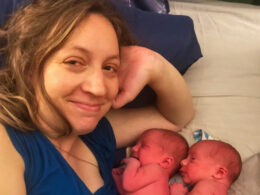A recent study conducted by the Morning Consult for the New York Times shows that the U.S. birthrate has declined significantly due to various economic and social factors. The study focused on young adults and indicates that younger generations are having fewer children for reasons ranging from a lack of economic stability to a desire for independence.
The United States has gradually slowed to the rest of the world’s declining birthrate, but the reasoning behind our concerning, but predictable decline goes beyond the factors considered in the Times’ report. As Anna Almendrala wrote for the Huffington Post, one factor not considered, but shockingly relevant, is that young people are unaware of when their fertility actually begins to decline. Furthermore, many young adults have placed their trust in modern technological methods of conceiving such as IVF.
But there’s reason to believe that many women are overestimating the effectiveness of these methods after a certain age. With economic factors being one of the top listed concerns, it’s important to note that on top of its unpredictability, IVF treatments cost approximately $12,000, and donor eggs and surrogacy cost even more.
Per a study conducted among Australian university students, “only 46 percent of women and 38 percent of men knew that women’s fertility begins to decline significantly from ages 35 to 39, and only 18 percent of men and 17 percent of women knew that men’s fertility declined from ages 45 to 49.”
Sex education is a highly valued commodity in the United States, however fertility awareness, still viewed by many as a niche topic, is gravely absent. In America, sex ed often focuses on ensuring kids are informed on how to have “safe sex”—that is, sex with a lessened chance of pregnancy or sexually transmitted disease. But there’s reason to believe teaching Fertility Awareness-Based Methods could help teens reach these goals even better.
Fertility Awareness not only teaches girls about their periods and how pregnancy happens, but provides a very personal understanding of the phases of the cycle, the signs of ovulation, including the often mysterious “mucus” discharge, the various hormones involved in their reproductive system, the meaning of fertility, and more.
A group called Teen STAR, which teaches girls in as many as 17 countries how to chart their cycles, found after as few as three months, girls educated in FABMs were less likely to engage in premature sexual activities. When ChildTrends, a leading U.S. nonprofit research organization, evaluated Teen STAR’s program, it reported “that this program is effective in reducing the rate of pregnancy, delaying the onset of sexual activity, decreasing sexual activity in sexually-active youth, and improving attitudes towards abstinence, compared with students in the no-treatment groups.” Further, knowledge of their natural fertility equipped girls to feel more in control of their hormones and think ahead when they knew a time of the month was coming when they’d feel a dip in emotions. For young women today, this protection from a dip in self-esteem as well as emotionally risky behaviors is invaluable.
The exclusion of fertility awareness from the standard and socially accepted rhetoric about family planning and sex is a significant educational gap that shouldn’t exist. Those drafting current sex-ed curriculum emphasize teaching how to avoid pregnancy, but information about our physical limitations when it comes to childbearing, conditions that if untreated could lead to infertility, and the body’s natural fertility decline are put on the back burner.
While increased fertility awareness is important, and should be included in sex-ed classes, it remains unknown if more young people will have children based on this data alone. Some young people may still feel overwhelmed by the current economic or social climate, and may determine these factors to hold more weight than their biological chances of pregnancy. But a number of women may decide to welcome children one day, but experience infertility due to conditions like PCOS, endometriosis, low progesterone, or other imbalances—conditions that charting one’s cycle could help identify sooner and, with the help of a FABM-trained doctor, remedy.
Almendrala’s article disheartened me, but as one of the aforementioned young adults, it didn’t surprise me. To be honest, if my mom and a friend hadn’t taught me about FABMs when I was a teenager, I can’t imagine where I would have received any useful information about my fertility. It is important to remember that fertility statistics aren’t one size fits all—some women (and men) are physically incapable of having children; others have eggs that age in their twenties, and some remain fertile late into life.
These are just some of the reasons that realistic education about fertility is crucial; whether someone decides to be open to having children at the time they learn or not, it brings peace of mind to be aware of one’s fertility and cycles for the long term. Fertility Awareness-Based Methods empower women to plan their families nearly cost-free, and with information that can last a lifetime. They do this by equipping women to understand crucial health information—not least of which is an awareness of when one is naturally fertile, and when one is not.











